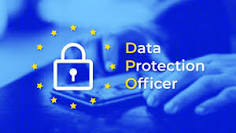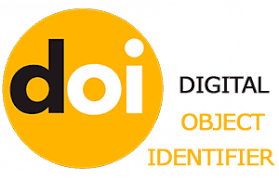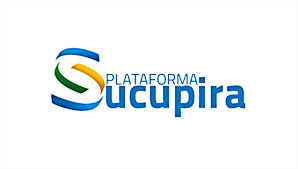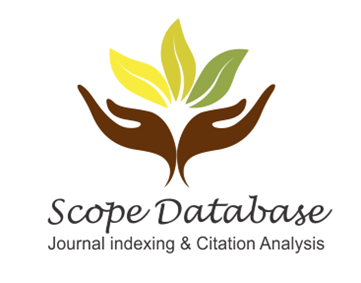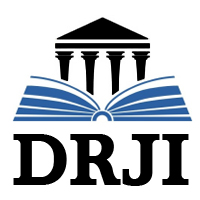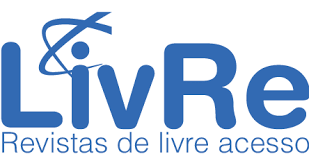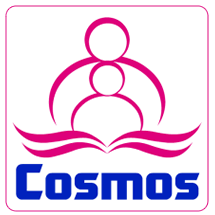EL TRASTORNO DE LA COORDINACIÓN DEL DESARROLLO (DCD) Y EL PAPEL DE LAS TIC Y LA NEUROFEEDBACK (NF) PARA EL ENTRENAMIENTO Y LA INTERVENCIÓN
DOI:
https://doi.org/10.47820/jht.v2i2.38Palabras clave:
: neurorretroalimentación, NF, NFT, EEG, biorretroalimentación, DCDResumen
DCD es un trastorno del neurodesarrollo que afecta muchos niveles del funcionamiento de una persona, mostrando una multitud de características que persisten a lo largo de la vida de la persona. Neurofeedback es una forma de intervención no invasiva ampliamente utilizada que se implementa en todo el mundo en poblaciones sin DCD y se presenta como eficaz para abordar muchas dificultades y características comunes de DCD. El propósito de esta revisión de la literatura es resaltar el impacto de NF mostrando varios estudios de su efectividad en varias poblaciones con características clave principales que también se presentan en DCD. En la introducción, se describen las definiciones básicas sobre los conceptos de DCD y neurofeedback y, en la parte principal, se realiza un análisis de DCD para investigar más a fondo sus características clave que se alinean con otras poblaciones (especialmente el TDAH) en las que se requiere una mayor investigación con neurofeedback. propuesta por su eficacia.
Descargas
Citas
American Psychiatric Association. (1987). Diagnostic and statistical manual of mental disorders (3rd ed., rev.)
American Psychiatric Association. (1994). Diagnostic and statistical manual of mental disorders (4th ed.).
American Psychiatric Association. (2013). Diagnostic and statistical manual of mental disorders (5th ed.) DOI: https://doi.org/10.1176/appi.books.9780890425596
Bernardi, M., Leonard, H. C., Hill, E. L., Botting, N., & Henry, L. A. (2018). Executive functions in children with developmental coordination disorder: a 2-year follow-up study. Developmental Medicine & Child Neurology, 60(3), 306–313. https://doi.org/10.1111/dmcn.13640 DOI: https://doi.org/10.1111/dmcn.13640
Blank, R., Barnett, A. L., Cairney, J., Green, D., Kirby, A., Polatajko, H., Rosenblum, S., Smits-Engelsman, B., Sugden, D., Wilson, P., & Vinçon, S. (2019). International clinical practice recommendations on the definition, diagnosis, assessment, intervention, and psychosocial aspects of developmental coordination disorder. Developmental medicine and child neurology, 61(3), 242–285. https://doi.org/10.1111/dmcn.14132 DOI: https://doi.org/10.1111/dmcn.14132
Brown-Lum, M., Izadi-Najafabadi, S., Oberlander, T. F., Rauscher, A., and Zwicker, J. G. (2020). Differences in white matter microstructure among children with developmental coordination disorder. JAMA Netw. Open 3, e201184. doi: 10.1001/jamanetworkopen.2020.1184 DOI: https://doi.org/10.1001/jamanetworkopen.2020.1184
Cousins, M., & Smyth, M. M. (2003). Developmental coordination impairments in adulthood. Human Movement Science, 22(4–5), 433–459. https://doi.org/10.1016/j.humov.2003.09.003 DOI: https://doi.org/10.1016/j.humov.2003.09.003
Gill, K. (2022). Developmental Coordination Disorder: What Can We Learn From Recombinant Inbred Mice Using Motor Learning Tasks and Quantitative Trait Locus Analysis. bioRxiv. https://www.biorxiv.org/content/10.1101/2022.05.18.492177v1 DOI: https://doi.org/10.1101/2022.05.18.492177
Goulardins, J. B., Marques, J. C., & De Oliveira, J. H. C. (2017). Attention Deficit Hyperactivity Disorder and Motor Impairment. Perceptual and Motor Skills, 124(2), 425–440. https://doi.org/10.1177/0031512517690607 DOI: https://doi.org/10.1177/0031512517690607
Harris, S. R., Mickelson, E. C. R., & Zwicker, J. G. (2015). Diagnosis and management of developmental coordination disorder. CMAJ: Canadian Medical Association journal = journal de l'Association medicale canadienne, 187(9), 659–665. https://doi.org/10.1503/cmaj.140994 DOI: https://doi.org/10.1503/cmaj.140994
Harris, S., Wilmut, K., & Rathbone, C. J. (2021). Anxiety, confidence and self-concept in adults with and without developmental coordination disorder. Research in Developmental Disabilities, 119, 104119. https://doi.org/10.1016/j.ridd.2021.104119 DOI: https://doi.org/10.1016/j.ridd.2021.104119
Hyde, C., Fuelscher, I., Williams, J., Lum, J. A. G., He, J., Barhoun, P., et al. (2018). Corticospinal excitability during motor imagery is reduced in young adults with developmental coordination disorder. Res. Dev. Disabil. 72, 214–224. doi: 10.1016/j.ridd.2017.11.009 DOI: https://doi.org/10.1016/j.ridd.2017.11.009
Irie, K., Matsumoto, A., Zhao, S., Kato, T., & Liang, N. (2021). Neural Basis and Motor Imagery Intervention Methodology Based on Neuroimaging Studies in Children With Developmental Coordination Disorders: A Review. Frontiers in Human Neuroscience, 15. https://doi.org/10.3389/fnhum.2021.620599 DOI: https://doi.org/10.3389/fnhum.2021.620599
Kirby, A., Williams, N. A., Thomas, M., & Hill, E. L. (2013). Self-reported mood, general health, wellbeing and employment status in adults with suspected DCD. Research in Developmental Disabilities, 34(4), 1357–1364. https://doi.org/10.1016/j.ridd.2013.01.003 DOI: https://doi.org/10.1016/j.ridd.2013.01.003
Lachambre, C., Proteau-Lemieux, M., Lepage, J. F., Bussières, E. L., & Lippé, S. (2021). Attentional and executive functions in children and adolescents with developmental coordination disorder and the influence of comorbid disorders: A systematic review of the literature. PLOS ONE, 16(6), e0252043. https://doi.org/10.1371/journal.pone.0252043 DOI: https://doi.org/10.1371/journal.pone.0252043
LaMarca, K., Gevirtz, R., Lincoln, A. J., & Pineda, J. A. (2018). Facilitating Neurofeedback in Children with Autism and Intellectual Impairments Using TAGteach. Journal of Autism and Developmental Disorders, 48(6), 2090–2100. https://doi.org/10.1007/s10803-018-3466-4 DOI: https://doi.org/10.1007/s10803-018-3466-4
Lê, M., Blais, M., Jucla, M., Chauveau, N., Maziero, S., Biotteau, M., et al. (2021). Procedural learning and retention of audio-verbal temporal sequence is altered in children with developmental coordination disorder but cortical thickness matters. Dev. Sci. 24, 1–14. doi: 10.1111/desc.13009 DOI: https://doi.org/10.1111/desc.13009
Lino, F., & Chieffo, D. P. R. (2022). Developmental Coordination Disorder and Most Prevalent Comorbidities: A Narrative Review. Children, 9(7), 1095. https://doi.org/10.3390/children9071095 DOI: https://doi.org/10.3390/children9071095
Linden, D. E. J., & Turner, D. L. (2016). Real-time functional magnetic resonance imaging neurofeedback in motor neurorehabilitation. Current Opinion in Neurology, 29(4), 412–418. https://doi.org/10.1097/wco.0000000000000340 DOI: https://doi.org/10.1097/WCO.0000000000000340
Luo, X., Guo, X., Zhao, Q., Zhu, L., Chen, Y., Zhang, D., Jiang, H., Wang, Y., Johnstone, S. J., & Sun, L. (2022). A randomized controlled study of remote computerized cognitive, neurofeedback, and combined training in the treatment of children with attention-deficit/hyperactivity disorder. European Child & Adolescent Psychiatry. https://doi.org/10.1007/s00787-022-01956-1 DOI: https://doi.org/10.1007/s00787-022-01956-1
Marzbani, H., Marateb, H. R., & Mansourian, M. (2016). Neurofeedback: A Comprehensive Review on System Design, Methodology and Clinical Applications. Basic and clinical neuroscience, 7(2), 143–158. https://doi.org/10.15412/J.BCN.03070208 DOI: https://doi.org/10.15412/J.BCN.03070208
Meachon, E., Zemp, M., & Alpers, G. W. (2022). Developmental Coordination Disorder (DCD): Relevance for clinical psychologists in Europe. Clinical Psychology in Europe, 4(2). https://doi.org/10.32872/cpe.4165 DOI: https://doi.org/10.32872/cpe.4165
Mekkawy, L. (2021). Efficacy of neurofeedback as a treatment modality for children in the autistic spectrum. Bulletin of the National Research Centre, 45(1). https://doi.org/10.1186/s42269-021-00501-5 DOI: https://doi.org/10.1186/s42269-021-00501-5
Moradi, N., Rajabi, S., & Nejad, A. F. (2022). The effect of neurofeedback training combined with computer cognitive games on the time perception, attention, and working memory in children with ADHD. Applied Neuropsychology. Child, 1–13. https://doi.org/10.1080/21622965.2022.2112679 DOI: https://doi.org/10.1080/21622965.2022.2112679
Norouzi, E., Hossieni, F., & Solymani, M. (2018). Effects of Neurofeedback Training on Performing Bimanual Coordination In-phase and Anti-phase Patterns in Children with ADHD. Applied Psychophysiology and Biofeedback, 43(4), 283–292. https://doi.org/10.1007/s10484-018-9408-2 DOI: https://doi.org/10.1007/s10484-018-9408-2
Polatajko, H., Fox, M., & Missiuna, C. (1995). An international consensus on children with developmental coordination disorder. Canadian Journal of Occupational Therapy, 62, 3– 6. https://doi.org/10.1177/000841749506200101 DOI: https://doi.org/10.1177/000841749506200101
Rahimi-Golkhandan, S., Steenbergen, B., Piek, J. P., Caeyenberghs, K., & Wilson, P. W. (2016). Revealing hot executive function in children with motor coordination problems: What’s the go? Brain and Cognition, 106, 55–64. https://doi.org/10.1016/j.bandc.2016.04.010 DOI: https://doi.org/10.1016/j.bandc.2016.04.010
Reynolds, J. E., Licari, M. K., Reid, S. L., Elliott, C., Winsor, A. M., Bynevelt,M., et al. (2017). Reduced relative volume in motor and attention regions in developmental coordination disorder: a voxel-based morphometry study. Int. J. Dev. Neurosci. 58, 59–64. doi: 10.1016/j.ijdevneu.2017.01.008 DOI: https://doi.org/10.1016/j.ijdevneu.2017.01.008
Sartori, R. B., Valentini, N. C., & Fonseca, R. P. (2020). Executive function in children with and without developmental coordination disorder: A comparative study. Child Care Health and Development, 46(3), 294–302. https://doi.org/10.1111/cch.12734 DOI: https://doi.org/10.1111/cch.12734
Sheikh, M., Aghasoleimani Najafabadi, M., Shahrbanian, S., & Alavizadeh, S. M. (2022). Effectiveness of Neurofeedback With Selected Training Program on Motor Function, Anxiety, and Sleep Habits in Children With Attention Deficit/Hyperactivity Disorder (ADHD). The Scientific Journal of Rehabilitation Medicine, 11(3), 356–369. https://doi.org/10.32598/sjrm.11.3.1 DOI: https://doi.org/10.32598/SJRM.11.3.1
Subara-Zukic, E., Cole, M., McGuckian, T. B., Steenbergen, B., Green, D., Smits-Engelsman, B. C. M., Lust, J. M., Abdollahipour, R., Domellöf, E., Deconinck, F. J., Blank, R., & Wilson, P. W. (2022). Behavioral and Neuroimaging Research on Developmental Coordination Disorder (DCD): A Combined Systematic Review and Meta-Analysis of Recent Findings. Frontiers in Psychology, 13. https://doi.org/10.3389/fpsyg.2022.809455 DOI: https://doi.org/10.3389/fpsyg.2022.809455
Sudnawa, K. K., Chirdkiatgumchai, V., Ruangdaraganon, N., Khongkhatithum, C., Udomsubpayakul, U., Jirayucharoensak, S., & Israsena, P. (2018). Effectiveness of neurofeedback versus medication for attention-deficit/hyperactivity disorder. Pediatrics International. https://doi.org/10.1111/ped.13641 DOI: https://doi.org/10.1111/ped.13641
Tsiotra, G. D., Flouris, A. D., Koutedakis, Y., Faught, B. E., Nevill, A. M., Lane, A. M., & Skenteris, N. (2006). A Comparison of Developmental Coordination Disorder Prevalence Rates in Canadian and Greek Children. Journal of Adolescent Health, 39(1), 125–127. https://doi.org/10.1016/j.jadohealth.2005.07.011 DOI: https://doi.org/10.1016/j.jadohealth.2005.07.011
Vlachou, J., Polychroni, F., Drigas, A., & Economou, A. (2022). Neurofeedback and ADHD. International Journal of Recent Contributions from Engineering, Science & IT (iJES), 10(01), pp. 47–56. Doi: 10.3991/ijes.v10i01.29079 DOI: https://doi.org/10.3991/ijes.v10i01.29079
Villa, M., Ruiz, L.M. & Barriopedro, M.I.(2019). Análisis de las relaciones entre elTrastorno del Desarrollo de la Coordinación(TDC/DCD) y el Trastorno por Déficit deAtención e Hiperactividad (TDAH) en la edadescolar. Retos, 36, 625-632
Wang, C., Tseng, Y., Liu, D., & Tsai, C. L. (2017). Neural Oscillation Reveals Deficits in Visuospatial Working Memory in Children With Developmental Coordination Disorder. Child Development, 88(5), 1716–1726. https://doi.org/10.1111/cdev.12708 DOI: https://doi.org/10.1111/cdev.12708
Williams, J., Kashuk, S. R., Wilson, P. H., Thorpe, G., and Egan, G. F. (2017).White matter alterations in adults with probable developmental coordination disorder: an MRI diffusion tensor imaging study. Neuroreport 28, 87–92. doi: 10.1097/WNR.0000000000000711 DOI: https://doi.org/10.1097/WNR.0000000000000711
Wilson, P. H., Smits-Engelsman, B., Caeyenberghs, K., Steenbergen, B., Sugden, D., Clark, J., Mumford, N., & Blank, R. (2017). Cognitive and neuroimaging findings in developmental coordination disorder: new insights from a systematic review of recent research. Developmental Medicine &Amp; Child Neurology, 59(11), 1117–1129. https://doi.org/10.1111/dmcn.13530 DOI: https://doi.org/10.1111/dmcn.13530
Wilson, P. W., Ruddock, S., Rahimi-Golkhandan, S., Piek, J. J., Sugden, D. E., Green, D., & Steenbergen, B. (2020). Cognitive and motor function in developmental coordination disorder. Developmental Medicine & Child Neurology, 62(11), 1317–1323. https://doi.org/10.1111/dmcn.14646 DOI: https://doi.org/10.1111/dmcn.14646
Zwicker, J. G., Suto, M., Harris, S. R., Vlasakova, N., & Missiuna, C. (2018). Developmental coordination disorder is more than a motor problem: Children describe the impact of daily struggles on their quality of life. British Journal of Occupational Therapy, 81(2), 65–73. https://doi.org/10.1177/0308022617735046 DOI: https://doi.org/10.1177/0308022617735046
Stavridou Th., Driga, A.M., Drigas, A.S., 2021. Blood Markers in Detection of Autism, International Journal of Recent Contributions from Engineering Science & IT (iJES) 9(2):79-86. DOI: https://doi.org/10.3991/ijes.v9i2.21283
Zavitsanou, A., & Drigas, A. (2021). Nutrition in mental and physical health. Technium Soc. Sci. J., 23, 67. DOI: https://doi.org/10.47577/tssj.v23i1.4126
Driga, A.M., Drigas, A.S. 2019 “Climate Change 101: How Everyday Activities Contribute to the Ever-Growing Issue”, International Journal of Recent Contributions from Engineering, Science & IT, vol. 7(1), pp. 22-31. https://doi.org/10.3991/ijes.v7i1.10031 DOI: https://doi.org/10.3991/ijes.v7i1.10031
Driga, A.M., and Drigas, A.S. 2019 “ADHD in the Early Years: Pre-Natal and Early Causes and Alternative Ways of Dealing.” International Journal of Online and Biomedical Engineering (IJOE), vol. 15, no. 13, p. 95., doi:10.3991/ijoe.v15i13.11203 DOI: https://doi.org/10.3991/ijoe.v15i13.11203
Stathopoulou, et all 2018, Mobile assessment procedures for mental health and literacy skills in education. International Journal of Interactive Mobile Technologies, 12(3), 21-37, DOI: https://doi.org/10.3991/ijim.v12i3.8038
Drigas, A., Kokkalia, G. & Lytras, M. D. (2015). Mobile and Multimedia Learning in Preschool Education. J. Mobile Multimedia, 11(1-2), 119–133.
Kokkalia G, AS Drigas, A Economou 2016 Mobile learning for preschool education. International Journal of Interactive Mobile Technologies 10 (4) DOI: https://doi.org/10.3991/ijim.v10i4.6021
Stathopoulou A, Karabatzaki Z, Tsiros D, Katsantoni S, Drigas A, 2019 Mobile apps the educational solution for autistic students in secondary education Journal of Interactive Mobile Technologies 13 (2), 89-101 DOI: https://doi.org/10.3991/ijim.v13i02.9896
Drigas A, DE Dede, S Dedes 2020 Mobile and other applications for mental imagery to improve learning disabilities and mental health International Journal of Computer Science Issues (IJCSI) 17 (4), 18-23
Drigas, A. S., Stavridis, G., & Koukianakis, L. (2004). A Modular Environment for E-learning and E-psychology Applications. WSEAS Transactions on Computers, 3(6), 2062-2067..
Papanastasiou G., Drigas, A. S., Skianis Ch., M. Lytras & E. Papanastasiou, 2018. “Patient-Centric ICTs based Healthcare for students with learning, physical and/or sensory disabilities,” Telemat Inform, vol. 35, no. 4, pp. 654–664, 2018. https://doi. org/10.1016/j.tele.2017.09.002 DOI: https://doi.org/10.1016/j.tele.2017.09.002
Drigas, A., & Kontopoulou, M. T. L. (2016). ICTs based Physics Learning. International Journal of Engineering Pedagogy (iJEP), 6(3), 53-59. https://doi.org/10.3991/ijep.v6i3. 53-59 DOI: https://doi.org/10.3991/ijep.v6i3.5899
Pappas, M., Eleftheria Demertzi, Yannis Papagerasimou, Lefteris Koukianakis, Nikitas Voukelatos, and Drigas, A. S., 2019. Cognitive Based E-Learning Design for Older Adults. Social Sciences 8, 1 (Jan. 2019), 6. https://doi.org/10.3390/socsci801000 DOI: https://doi.org/10.3390/socsci8010006
Drigas, A. S., Lefteris Koukianakis 2009: Government online: An e-government platform to improve public administration operations and services delivery to the citizen. WSKS (1), volume 5736 de Lecture Notes in Computer Science, 523–532. Springer, DOI: https://doi.org/10.1007/978-3-642-04754-1_53
Theodorou, P.; Drigas, A. 2017, ICTs and Music in Generic Learning Disabilities. Int. J. Emerg. Technol. Learn. 12(4), 101–110 DOI: https://doi.org/10.3991/ijet.v12i04.6588
Pappas, M.A., & Drigas, A.S. (2015). ICT based screening tools and etiology of dyscalculia. International Journal of Engineering Pedagogy, (5)3, 61-66. DOI: https://doi.org/10.3991/ijep.v5i3.4735
Drigas, A., & Kostas, I. (2014). On Line and other ICTs Applications for teaching math in Special Education. International Journal of Recent Contributions from Engineering, Science & IT (iJES), 2(4), pp-46. http://dx.doi.org/10.3991/ijes.v2i4.4204 DOI: https://doi.org/10.3991/ijes.v2i4.4204
Alexopoulou, A, Batsou, A, Drigas, A. (2019). Resilience and academic underachievement in gifted students: causes, consequences and strategic methods of prevention and intervention. International Journal of Online and Biomedical Engineering (iJOE), vol. 15, no. 14, pp. 78. DOI: https://doi.org/10.3991/ijoe.v15i14.11251
Drigas, A. & Ioannidou, R. E. (2013). Special education and ICT's. International Journal of Emerging Technologies in Learning 8(2), 41– 47. DOI: https://doi.org/10.3991/ijet.v8i2.2514
Drigas, A., & Papanastasiou, G. (2014). Interactive White Boards in Preschool and Primary Education. International Journal of Online and Biomedical Engineering (iJOE), 10(4), 46–51. https://doi.org/10.3991/ijoe.v10i4.3754 DOI: https://doi.org/10.3991/ijoe.v10i4.3754
Drigas, A. S. and Politi-Georgousi, S. (2019). Icts as a distinct detection approach for dyslexia screening: A contemporary view. International Journal of Online and Biomedical Engineering (iJOE), 15(13):46–60. DOI: https://doi.org/10.3991/ijoe.v15i13.11011
Lizeta N. Bakola, Nikolaos D. Rizos, Drigas, A. S., 2019 “ICTs for Emotional and Social Skills Development for Children with ADHD and ASD Co-existence” International Int. J. Emerg. Technol. Learn., 14(5), 122-131. DOI: https://doi.org/10.3991/ijet.v14i05.9430
Kontostavlou, E.Z., & Drigas, A.S. (2019). The Use of Information and Communications Technology (ICT) in Gifted Students. International Journal of Recent Contributions from Engineering, Science and IT, 7(2), 60-67. doi:10.3991/ijes.v7i2.10815 DOI: https://doi.org/10.3991/ijes.v7i2.10815
Drigas, A. S., and Vlachou J. A., 2016. “Information and communication technologies (ICTs) and autistic spectrum disorders (ASD),” Int. J. Recent Contrib. Eng. Sci. IT (iJES), vol. 4, no. 1, p. 4, https://doi.org/10.3991/ijes.v4i1.5352 DOI: https://doi.org/10.3991/ijes.v4i1.5352
Drigas, A. S., Koukianakis, L, Papagerasimou, Y. (2006) “An elearning environment for nontraditional students with sight disabilities.”, Frontiers in Education Conference, 36th Annual. IEEE, p. 23-27. DOI: https://doi.org/10.1109/FIE.2006.322633
Drigas A., and Koukianakis L. 2006 An open distance learning e-system to support SMEs e-enterprising. In proceeding of 5th WSEAS Internationalconference on Artificial intelligence, knowledge engineering, data bases (AIKED 2006). Spain
Drigas A, Petrova A 2014 ICTs in speech and language therapy International Journal of Engineering Pedagogy (iJEP) 4 (1), 49-54 DOI: https://doi.org/10.3991/ijep.v4i1.3280
Bravou V, Oikonomidou D, Drigas A, 2022 Applications of Virtual Reality for Autism Inclusion. A review Retos 45, 779-785 DOI: https://doi.org/10.47197/retos.v45i0.92078
Chaidi I, Drigas A, 2022 "Parents' views Questionnaire for the education of emotions in Autism Spectrum Disorder" in a Greek context and the role of ICTs Technium Social Sciences Journal 33, 73-91 DOI: https://doi.org/10.47577/tssj.v33i1.6878
Bravou V, Drigas A, 2019 A contemporary view on online and web tools for students with sensory & learning disabilities iJOE 15(12) 97 DOI: https://doi.org/10.3991/ijoe.v15i12.10833
Xanthopoulou M, Kokalia G, Drigas A, 2019, Applications for Children with Autism in Preschool and Primary Education. Int. J. Recent Contributions Eng. Sci. IT 7 (2), 4-16 DOI: https://doi.org/10.3991/ijes.v7i2.10335
Chaidi I, Drigas A, C Karagiannidis 2021 ICT in special education Technium Soc. Sci. J. 23, 187 DOI: https://doi.org/10.47577/tssj.v23i1.4277
Vrettaros, J., Tagoulis, A., Giannopoulou, N., & Drigas, A. (2009). An empirical study on the use of Web 2.0 by Greek adult instructors in educational procedures. World Summit on Knowledge System (WSKS), 49, 164-170. http://dx.doi.org/10.1007/978-3-642-04757-2_18 DOI: https://doi.org/10.1007/978-3-642-04757-2_18
Chaidi E, Kefalis C, Papagerasimou Y, Drigas, 2021, Educational robotics in Primary Education. A case in Greece, Research, Society and Development 10 (9), e17110916371-e17110916371 DOI: https://doi.org/10.33448/rsd-v10i9.16371
Drigas, A., Dourou, A. (2013). A Review on ICTs, E-Learning and Artificial Intelligence for Dyslexic's Assistance. iJet, 8(4), 63-67. DOI: https://doi.org/10.3991/ijet.v8i4.2980
Anagnostopoulou, P., Alexandropoulou, V., Lorentzou, G., Lykothanasi, A., Ntaountaki, P., & Drigas, A. (2020). Artificial intelligence in autism assessment. International Journal of Emerging Technologies in Learning, 15(6), 95-107. https://doi.org/10.3991/ijet.v15i06.11231 DOI: https://doi.org/10.3991/ijet.v15i06.11231
Pappas, M., & Drigas, A. (2016). Incorporation of artificial intelligence tutoring techniques in mathematics. International Journal of Engineering Pedagogy, 6(4), 12–16. https://doi.org/10.3991/ijep.v6i4.6063 DOI: https://doi.org/10.3991/ijep.v6i4.6063
Lytra N, Drigas A 2021 STEAM education-metacognition–Specific Learning Disabilities Scientific Electronic Archives 14 (10) DOI: https://doi.org/10.36560/141020211442
Mitsea E, Lytra N, A Akrivopoulou, A Drigas 2020 Metacognition, Mindfulness and Robots for Autism Inclusion. Int. J. Recent Contributions Eng. Sci. IT 8 (2), 4-20 DOI: https://doi.org/10.3991/ijes.v8i2.14213
Stavridis S, D Papageorgiou, Z Doulgeri 2017 Dynamical system based robotic motion generation with obstacle avoidance, IEEE Robotics and Automation Letters 2 (2), 712-718 DOI: https://doi.org/10.1109/LRA.2017.2651172
Kastritsi T, D Papageorgiou, I Sarantopoulos, S Stavridis, Z Doulgeri, 2019 Guaranteed active constraints enforcement on point cloud-approximated regions for surgical applications 2019 International Conference on Robotics and Automation (ICRA), 8346-8352 DOI: https://doi.org/10.1109/ICRA.2019.8793953
Stavridis S, Z Doulgeri 2018 Bimanual assembly of two parts with relative motion generation and task related optimization 2018 IEEE/RSJ International Conference on Intelligent Robots and Systems … DOI: https://doi.org/10.1109/IROS.2018.8593928
Stavridis S, P Falco, Z Doulgeri 2020 Pick-and-place in dynamic environments with a mobile dual-arm robot equipped with distributed distance sensors IEEE-RAS 20th International Conference on Humanoid Robots (Humanoids)
Papageorgiou D, S Stavridis, C Papakonstantinou, Z Doulgeri 2021Task geometry aware assistance for kinesthetic teaching of redundant robots IEEE/RSJ International Conference on Intelligent Robots and Systems … DOI: https://doi.org/10.1109/IROS51168.2021.9636209
Kastritsi T, I Sarantopoulos, S Stavridis, D Papageorgiou, Z Doulgeri Manipulation of a Whole Surgical Tool Within Safe Regions Utilizing Barrier Artificial Potentials Mediterranean Conference on Medical and Biological Engineering and Computing …
Stavridis S, D Papageorgiou, L Droukas, Z Doulgeri 2022 Bimanual crop manipulation for human-inspired robotic harvesting arXiv preprint arXiv:2209.06074
Chaidi I, Drigas A 2022 Digital games & special education Technium Social Sciences Journal 34, 214-236 DOI: https://doi.org/10.47577/tssj.v34i1.7054
Doulou A, Drigas A 2022 Electronic, VR & Augmented Reality Games for Intervention in ADHD Technium Social Sciences Journal, 28, 159. DOI: https://doi.org/10.47577/tssj.v28i1.5728
Kokkalia, G., Drigas, A., & Economou, A. (2016). The role of games in special preschool education. International Journal of Emerging Technologies in Learning (iJET), 11(12), 30-35. DOI: https://doi.org/10.3991/ijet.v11i12.5945
Kefalis C, Kontostavlou EZ, Drigas A, 2020 The Effects of Video Games in Memory and Attention. Int. J. Eng. Pedagog. 10 (1), 51-61 DOI: https://doi.org/10.3991/ijep.v10i1.11290
Drigas, A., & Mitsea, E. (2020). The 8 Pillars of Metacognition. International Journal of Emerging Technologies in Learning (iJET), 15(21), 162-178. https://doi.org/10.3991/ijet. v15i21.14907 DOI: https://doi.org/10.3991/ijet.v15i21.14907
Drigas, A. S., and M. Pappas, 2017. “The Consciousness-Intelligence-Knowledge Pyramid: An 8x8 Layer Model,” International Journal of Recent Contributions from Engineering, Science & IT (iJES), vol. 5, no.3, pp 14-25, https://doi.org/10.3991/ijes.v5i3.7680 DOI: https://doi.org/10.3991/ijes.v5i3.7680
Drigas, A., & Mitsea, E. (2021). 8 Pillars X 8 Layers Model of Metacognition: Educational Strategies, Exercises &Trainings. International Journal of Online & Biomedical Engineering, 17(8). https://doi.org/10.3991/ijoe.v17i08.23563 DOI: https://doi.org/10.3991/ijoe.v17i08.23563
Drigas, A., & Mitsea, E. (2020). The Triangle of Spiritual Intelligence, Metacognition and Consciousness. International Journal of Recent Contributions from Engineering, Science & IT (iJES), 8(1), 4-23. https://doi.org/10.3991/ijes.v8i1.12503 DOI: https://doi.org/10.3991/ijes.v8i1.12503
Pappas M, Drigas A. 2019; Computerized Training for Neuroplasticity and Cognitive Improvement. International Journal of Engineering Pedagogy.9(4):50-62 DOI: https://doi.org/10.3991/ijep.v9i4.10285
Papoutsi, C. and Drigas, A. (2017) Empathy and Mobile Applications. International Journal of Interactive Mobile Technologies 11(3). 57. https://doi.org/10.3991/ijim.v11i3.6385 DOI: https://doi.org/10.3991/ijim.v11i3.6385
Papoutsi, C. & Drigas, A. (2016). Games for Empathy for Social Impact. International Journal of Engineering Pedagogy 6(4), 36-40. DOI: https://doi.org/10.3991/ijep.v6i4.6064
Karyotaki, M., & Drigas, A. (2015). Online and other ICT Applications for Cognitive Training and Assessment. International Journal of Online and Biomedical Engineering. 11(2), 36-42. DOI: https://doi.org/10.3991/ijoe.v11i2.4360
Papoutsi, C., Drigas, A., & Skianis, C. (2019). Emotional intelligence as an important asset for HR in organizations: Attitudes and working variables. International Journal of Advanced Corporate Learning, 12(2), 21–35. https://doi.org/10.3991/ijac.v12i2.9620 DOI: https://doi.org/10.3991/ijac.v12i2.9620
Chaidi I. Drigas, A. S., 2020. “Autism, Expression, and Understanding of Emotions: Literature Review,” Int. J. Online Biomed. Eng., vol. 16, no. 02, pp. 94–111, https://doi.org/ 10.3991/ijoe.v16i02.11991 DOI: https://doi.org/10.3991/ijoe.v16i02.11991
Drigas, A. S., & Karyotaki, M. (2019). A Layered Model of Human Consciousness. International Journal of Recent Contributions from Engineering, Science & IT (iJES), 7(3), 41- 50. https://doi.org/10.3991/ijes.v7i3.11117 DOI: https://doi.org/10.3991/ijes.v7i3.11117
Drigas, A. S., Karyotaki, M., & Skianis, C. (2018). An Integrated Approach to Neuro-development, Neuroplasticity and Cognitive Improvement. International Journal of Recent Contributions from Engineering, Science & IT (iJES), 6(3), 4-18. DOI: https://doi.org/10.3991/ijes.v6i3.9034
Karyotaki M. and Drigas, A. S., 2016. “Latest trends in problem solving assessment,” International Journal of Recent contributions from Engineering, Science & IT (iJES), vol. 4, no. 2, 4-10. DOI: https://doi.org/10.3991/ijes.v4i2.5800
Mitsea E., Drigas, A. S., and Mantas P., 2021. Soft Skills & Metacognition as Inclusion Amplifiers in the 21st Century,” Int. J. Online Biomed. Eng. IJOE, vol. 17, no. 04, Art. no. 04, https://doi.org/10.3991/ijoe.v17i04.20567 DOI: https://doi.org/10.3991/ijoe.v17i04.20567
Angelopoulou, E. Drigas, A. (2021). Working Memory, Attention and their Relationship: A theoretical Overview. Research. Society and Development, 10(5), 1-8. https://doi.org/10.33448/rsd-v10i5.15288 DOI: https://doi.org/10.33448/rsd-v10i5.15288
Tourimpampa, A., Drigas, A., Economou, A., & Roussos, P. (2018). Perception and text comprehension. It’sa matter of perception! International Journal of Emerging Technologies in Learning (iJET). 13(7) DOI: https://doi.org/10.3991/ijet.v13i07.7909
Drigas A, Mitsea E 2020 A metacognition based 8 pillars mindfulness model and training strategies. International Journal of Recent Contributions from Engineering, Science & IT 8(4), 4-17. DOI: https://doi.org/10.3991/ijes.v8i4.17419
Papoutsi C, Drigas A, C Skianis 2021 Virtual and augmented reality for developing emotional intelligence skills Int. J. Recent Contrib. Eng. Sci. IT (IJES) 9 (3), 35-53 DOI: https://doi.org/10.3991/ijes.v9i3.23939
Kapsi S, Katsantoni S, Drigas A 2020 The Role of Sleep and Impact on Brain and Learning. Int. J. Recent Contributions Eng. Sci. IT 8 (3), 59-68 DOI: https://doi.org/10.3991/ijes.v8i3.17099
Drigas A, Mitsea E, Skianis C 2021 The Role of Clinical Hypnosis and VR in Special Education International Journal of Recent Contributions from Engineering Science & IT 9(4), 4-17. DOI: https://doi.org/10.3991/ijes.v9i4.26147
V Galitskaya, A Drigas 2021 The importance of working memory in children with Dyscalculia and Ageometria Scientific Electronic Archives 14 (10) DOI: https://doi.org/10.36560/141020211449
Chaidi I, Drigas A 2020 Parents' Involvement in the Education of their Children with Autism: Related Research and its Results International Journal Of Emerging Technologies In Learning (Ijet) 15 (14), 194-203. DOI: https://doi.org/10.3991/ijet.v15i14.12509
Drigas A, Mitsea E 2021 Neuro-Linguistic Programming & VR via the 8 Pillars of Metacognition X 8 Layers of Consciousness X 8 Intelligences Technium Soc. Sci. J. 26, 159 DOI: https://doi.org/10.47577/tssj.v26i1.5273
Drigas A, Mitsea E 2022 Conscious Breathing: a Powerful Tool for Physical & Neuropsychological Regulation. The role of Mobile Apps Technium Social Sciences Journal 28, 135-158 DOI: https://doi.org/10.47577/tssj.v28i1.5922
Drigas A, Mitsea E, C Skianis 2022 Clinical Hypnosis & VR, Subconscious Restructuring-Brain Rewiring & the Entanglement with the 8 Pillars of Metacognition X 8 Layers of Consciousness X 8 Intelligences. International Journal of Online & Biomedical Engineering 18 (1) DOI: https://doi.org/10.3991/ijoe.v18i01.26859
Drigas A, Karyotaki M 2019 Attention and its Role: Theories and Models. International Journal of Emerging Technologies in Learning 14 (12), 169-182 DOI: https://doi.org/10.3991/ijet.v14i12.10185
Drigas A, Karyotaki M 2019 Executive Functioning and Problem Solving: A Bidirectional Relation. International Journal of Engineering Pedagogy (iJEP) 9 (3) DOI: https://doi.org/10.3991/ijep.v9i3.10186
Bamicha V, Drigas A 2022 ToM & ASD: The interconnection of Theory of Mind with the social-emotional, cognitive development of children with Autism Spectrum Disorder. The use of ICTs as an alternative … Technium Social Sciences Journal 33, 42-72 DOI: https://doi.org/10.47577/tssj.v33i1.6845
Drigas A, Mitsea E, C Skianis 2022 Neuro-Linguistic Programming, Positive Psychology & VR in Special Education. Scientific Electronic Archives 15 (1) DOI: https://doi.org/10.36560/15120221497
Drigas A, Mitsea E, Skianis C. 2022 Virtual Reality and Metacognition Training Techniques for Learning Disabilities SUSTAINABILITY 14(16), 10170 DOI: https://doi.org/10.3390/su141610170
Drigas A,. Sideraki A. 2021 Emotional Intelligence in Autism Technium Soc. Sci. J. 26, 80 DOI: https://doi.org/10.47577/tssj.v26i1.5178
Drigas A, Mitsea E, Skianis C.. 2022 Subliminal Training Techniques for Cognitive, Emotional and Behavioural Balance. The role of Εmerging Technologies Technium Social Sciences Journal 33, 164-186 DOI: https://doi.org/10.47577/tssj.v33i1.6881
Bakola L, Drigas A, 2020 Technological development process of emotional Intelligence as a therapeutic recovery implement in children with ADHD and ASD comorbidity. . International Journal of Online & Biomedical Engineering, 16(3), 75-85 DOI: https://doi.org/10.3991/ijoe.v16i03.12877
Drigas A, Bakola L, 2021The 8x8 Layer Model Consciousness-Intelligence-Knowledge Pyramid, and the Platonic Perspectives International Journal of Recent Contributions from Engineering, Science & IT (iJES) 9(2) 57-72 DOI: https://doi.org/10.3991/ijes.v9i2.22497
Bamicha V, Drigas A, 2022 The Evolutionary Course of Theory of Mind - Factors that facilitate or inhibit its operation & the role of ICTs Technium Social Sciences Journal 30, 138-158 DOI: https://doi.org/10.47577/tssj.v30i1.6220
Karyotaki M, Bakola L, Drigas A, Skianis C, 2022 Women’s Leadership via Digital Technology and Entrepreneurship in business and society Technium Social Sciences Journal. 28(1), 246–252. DOI: https://doi.org/10.47577/tssj.v28i1.5907
Mitsea E, Drigas A,, Skianis C, 2022, Breathing, Attention & Consciousness in Sync: The role of Breathing Training, Metacognition & Virtual Reality Technium Social Sciences Journal 29, 79-97 DOI: https://doi.org/10.47577/tssj.v29i1.6145
Drigas A, Papoutsi C, 2021, Nine Layer Pyramid Model Questionnaire for Emotional Intelligence, International Journal of Online & Biomedical Engineering 17 (7) DOI: https://doi.org/10.3991/ijoe.v17i07.22765
Drigas A, Papoutsi C, Skianis, 2021, Metacognitive and Metaemotional Training Strategies through the Nine-layer Pyramid Model of Emotional Intelligence, International Journal of Recent Contributions from Engineering, Science & IT (iJES) 9.4 58-76 DOI: https://doi.org/10.3991/ijes.v9i4.26189
Descargas
Publicado
Cómo citar
Número
Sección
Categorías
Licencia
Derechos de autor 2023 Revista Salud y Tecnología - JHT

Esta obra está bajo una licencia internacional Creative Commons Atribución 4.0.
Los derechos de autor de los artículos publicados pertenecen a JHT, y siguen el estándar Creative Commons (CC BY 4.0), permitiendo su copia o reproducción, siempre y cuando se cite la fuente y se respeten los derechos de autor y se mencionen en los créditos. Todo y cualquier trabajo publicado en la revista, su contenido es responsabilidad de los autores, siendo RECIMA21 únicamente responsable del vehículo de difusión, siguiendo estándares de publicación nacionales e internacionales.






